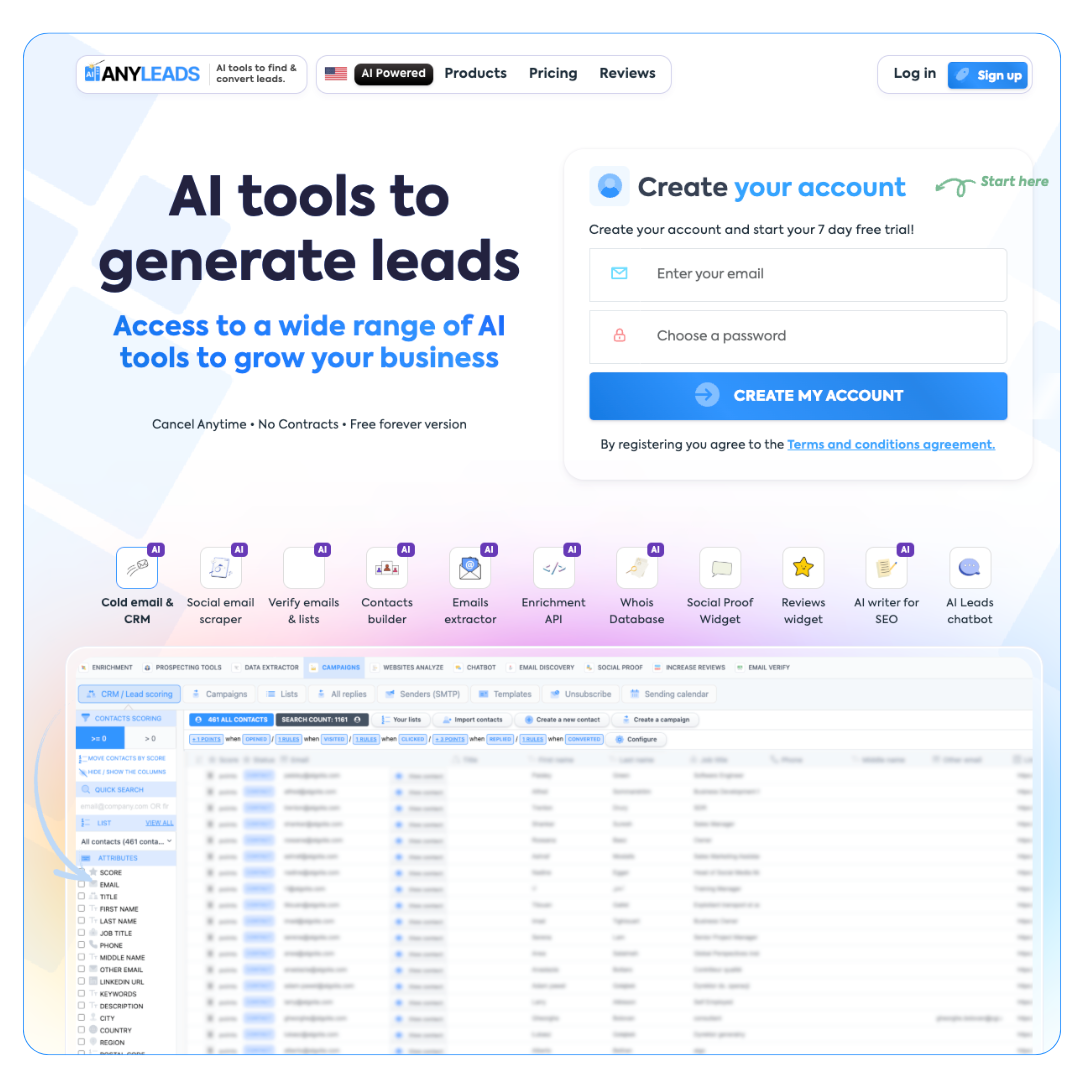 LIMITED SPOTS
All plans are 30% OFF for the first month! with the code WELCOME303
LIMITED SPOTS
All plans are 30% OFF for the first month! with the code WELCOME303

 LIMITED SPOTS
All plans are 30% OFF for the first month! with the code WELCOME303
LIMITED SPOTS
All plans are 30% OFF for the first month! with the code WELCOME303


Spotting the right upsell or cross-sell opportunity starts with knowing your leads. Some prospects signal readiness through clear actions. Others show it through subtle patterns in their data. The challenge is spotting those signals before they’re gone.
Data-driven lead scoring turns scattered details into a clear picture. It ranks leads based on behavior and fit, making it easier to focus on the right ones at the right time. With the right signals in place, you can connect when interest is high, needs are clear, and the chance to offer more value is strongest.
Behavioral signals show how a lead interacts with your brand. This can include email opens, website visits, product usage, or time spent on specific pages. Each action reveals intent. Consistent engagement often means the lead is moving closer to a purchase decision or is open to expanding their relationship with you.
Demographic signals focus on who the lead is. Industry, company size, job title, and location help you understand fit. A high-value product may appeal to certain segments more than others. Matching these traits with past customer data helps predict where upsell or cross-sell success is most likely.
Combining both signal types strengthens accuracy. A lead showing frequent engagement and strong demographic fit ranks higher in your scoring model. This pairing ensures you focus on prospects with both the interest and capacity to buy more, which saves time and directs energy toward opportunities with the best potential return.
Start with clean, reliable data. Pull behavioral information from CRM systems, marketing automation tools, and analytics platforms. Add demographic details from verified sources to round out each lead’s profile. Accuracy at this stage determines how well the scoring system performs later.
Define the signals that matter most to your upsell and cross-sell goals. Assign a weight to each based on historical success rates. A lead that engages with high-value content might score higher than one who only opens emails. Regularly review these weights to keep the model aligned with changing market conditions.
Test the scoring model before rolling it out fully. Compare predictions with actual sales outcomes to refine thresholds. Over time, the system should highlight patterns similar to those seen in advanced merchant tools like NMI, which detect growth opportunities through a mix of behavioral and profile-based indicators. Their merchant relationship management platform merges CRM and underwriting tools to streamline onboarding, reduce churn, and surface high-value expansion possibilities.


Upsell opportunities often appear when existing customers deepen their engagement. This could be a sudden increase in product usage, frequent logins, or interest in premium features. Tracking these behaviors over time reveals when a customer is likely to welcome an upgrade.
Sales teams should compare current activity with historical benchmarks. If a customer’s usage level now matches that of others who previously upgraded, the lead should move higher in priority. This data-backed approach reduces guesswork and keeps focus on the most promising accounts.
Pair behavioral insights with account history. A long-standing client with consistent payment patterns and growing usage signals both loyalty and readiness for more. Acting when these signs align increases the likelihood of securing a higher-value deal while strengthening the overall customer relationship.
Cross-sell success depends on understanding which customers are most likely to need complementary products or services. Demographic data such as industry type, business size, and geographic location can reveal natural fits for related offerings. These traits help you match the right solutions to the right segments.
Analyzing purchase histories alongside demographic profiles uncovers patterns. For example, certain industries may frequently adopt add-on services that enhance their primary purchase. Recognizing these trends allows you to create targeted offers that resonate with specific customer groups.
When demographic fit aligns with a history of relevant purchases, cross-sell timing becomes clear. Delivering the right offer at this stage increases acceptance rates and strengthens client value while positioning your business as a proactive partner that understands evolving customer needs.
Scoring thresholds determine when a lead becomes ready for upsell or cross-sell outreach. Setting them too low clutters the pipeline with low-value prospects. Setting them too high risks missing leads that could convert with timely engagement. The right balance comes from combining data analysis with sales feedback.
Start with historical performance data. Identify the score range of leads that most often resulted in successful upsells or cross-sells. Use this as the initial benchmark. Monitor results closely in the first few months, noting how many opportunities were won or lost within each range.
Adjust thresholds based on shifts in customer behavior, product offerings, or market trends. A change in buying cycles or engagement patterns might mean that the old cut-off no longer reflects reality. Reviewing thresholds regularly ensures your model remains effective and keeps the focus on leads most likely to deliver revenue growth.


Marketing and sales teams often have different perspectives on what makes a lead valuable. Without alignment, lead scoring models can create friction, with marketing passing leads that sales considers unqualified, or sales overlooking leads that marketing views as ready. Clear, shared criteria prevent these disconnects.
Begin by defining lead quality together. Both teams should agree on the behavioral and demographic signals that indicate upsell or cross-sell potential. Document these definitions so they remain consistent, even as team members change or strategies evolve.
Maintain alignment through regular check-ins. Review lead quality reports, discuss which leads converted, and adjust scoring rules based on joint observations. This ongoing collaboration ensures both teams trust the scoring process, act quickly on high-value leads, and work toward the same revenue goals.
Data-driven lead scoring transforms upsell and cross-sell from chance encounters into predictable growth opportunities. By combining behavioral cues with demographic insights, sales teams can identify and act on the most profitable leads faster.
Precision in scoring leads to better timing. It ensures that offers reach customers when their interest and capacity to buy are at their highest. This targeted approach improves conversion rates while reducing wasted effort on low-potential leads.
When implemented consistently, a well-tuned scoring model builds stronger customer relationships and maximizes lifetime value, creating a sustainable advantage in competitive markets.